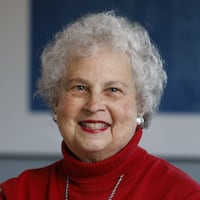We’re presenting our new series on regional architectural treasures in cooperation with AIA Dayton. The organization was founded in 1900 as a chapter of the American Institute of Architects, and serves today as the voice of the architecture profession in the Miami Valley. AIA Dayton serves a nine-county area and is involved numerous community outreach programs, including Greater Dayton’s Favorite Architecture, where the public can vote and comment on their own favorite buildings. Find more information online at greatdaytonarchitecture.com and www.aiadayton.org.
Architecture is historically considered a mix of art and science.
“If a building is perceived as interesting or beautiful, it tends to push more toward the artistic side,” said Michael McInturf who directs the Master of Architecture program at the University of Cincinnati’s School of Architecture and Interior Design. “A building can often cause an emotional reaction — it may be innovative, creative or may even anger people.”
McInturf says today’s designers must contend with building and zoning codes, economic feasibility and client requirements. He says it’s what the architect does beyond those basic requirements that turns a building into something truly special.
Today, we launch a new series that invites our readers to view both professional and residential buildings in the area through a different lens: the eye of a professional architect. It’s your chance to take another look at structures you see every day, but may know little about or thought about as a work of art.
With the help of their professional organization, AIA Dayton, we’ve invited architects throughout the area to pick their favorite structures and to tell us what’s special about them.
MEET TODAY’S ARCHITECT:
Matt Sauer is a Dayton native, an architect with local film RBA and president-elect of AIA Dayton. He lives in South Park with his wife and daughter in an 1879 cottage that undergoes continuous renovation.
SAUER’S TAKE ON HIS FAVORITE BUILDING:
I admit that it’s easy to overlook buildings from the 1950s and ’60s. The typically plain, boxy modernist facade can lack the charm and distinctiveness of earlier architecture, like the Dayton Art Institute or the Arcade. It is sometimes hard to distinguish one 1950s building from another (especially schools) and so many examples dot the Miami Valley that those two decades must have been a boom time for local construction and design firms.
So you might be forgiven for overlooking my favorite area building, the former Evangelical United Brethren Headquarters at 601 W. Riverview Ave. It was built in 1959, and sits just west of the Masonic Temple. The architect was the small Dayton firm of Lagedrost & Walter, who were prolific in this period, designing a number of local churches and schools. They later collaborated on the IBM (Soin International) Building downtown.
The United Brethren Headquarters building is a modernist gem. What sets this building apart from others of the period? To start, the form. The plan of the three-story office wing is shaped like an “L” and set back from the street, with a one-story chapel appended to the east side. The chapel and the short leg of the “L” surround an outdoor courtyard, a lovely space now shaded by two big, leafy trees, and sunken just enough below the level of the sidewalk along Grafton Avenue that you feel enclosed without walls or fences. The ribbons of office windows on the east side look out over this courtyard to views of the skyline and the Masonic Temple.
The main entrance on Grafton is modest, but shows off subtle detailing. Above the glass doors is a tall aluminum screen of airfoil-shaped fins — a space-age touch. The chapel is accented by a clerestory of stained glass and a cornice of repeating triangular limestone panels, in contrast with the flat, light-colored panels that adorn the rest of the building.
Any one of these elements could be found in a lesser building around town, but here they’re brought together in a skillful and sensitive way, taking full advantage of the sloping site, the river frontage, and the views. I can’t help but check it out — and smile — every time I drive by.
About the Author

